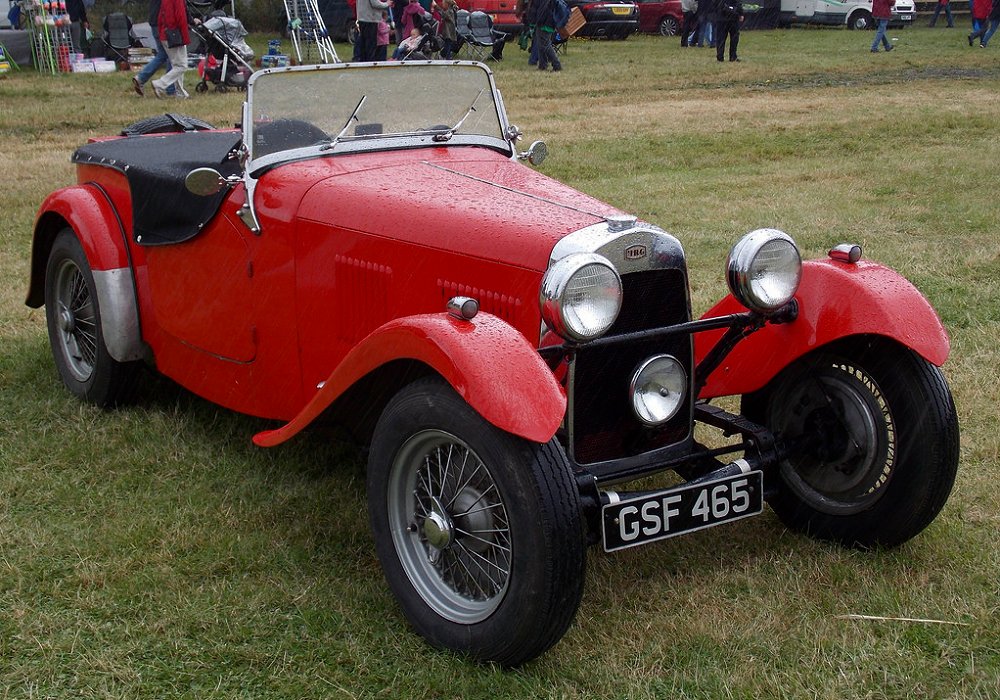Description
The HRG 1100 was one of the earliest and most distinctive models produced by HRG Engineering Company, a small but respected British sports car manufacturer active from the mid-1930s to the early 1950s. The 1100 embodied the spirit of the early HRG cars: light, purposeful, and mechanically straightforward, designed for genuine enthusiasts who valued driving precision and competition potential over luxury or refinement.
Founded in 1936 by Major Edward Halford, Guy Robins, and Henry Ronald Godfrey, HRG was a tiny firm compared to established British marques. Yet its founders were experienced engineers with backgrounds in GN and Frazer Nash—brands known for their focus on lightweight sporting machinery. Their philosophy for HRG was to build cars that were simple, reliable, and fast through sound design rather than sheer power. The HRG 1100 was the purest expression of this ethos.
Introduced in 1938, the HRG 1100 was based on a tubular ladder-type chassis designed for lightness and rigidity. It featured independent front suspension by transverse leaf spring and a live rear axle supported by semi-elliptic leaf springs, providing excellent handling for its time. The car weighed around 635 kilograms, which made it agile and quick despite modest engine capacity. Its compact proportions and balanced weight distribution gave it a sharp, responsive character that appealed to amateur racers and keen drivers alike.
Power came from a 1,074 cc four-cylinder overhead-valve engine supplied by Singer, a unit known for its durability and rev-friendly nature. In standard tune, it produced around 40–45 horsepower, which was sufficient to propel the light HRG to speeds of about 80–85 mph (130–135 km/h). The engine was paired with a close-ratio four-speed gearbox, and the car’s low gearing, combined with its minimal weight, allowed brisk acceleration and lively performance. Many owners tuned their engines further, fitting high-compression pistons, improved carburetion, or special camshafts for competition use.
The bodywork of the HRG 1100 was simple but elegant, constructed from lightweight aluminum panels over a tubular frame. Most examples were built as open two-seat sports cars with cycle-type wings and a long bonnet tapering back to a cut-down tail. The design followed prewar British sports car tradition—functional, with exposed wheels, low windscreen, and minimal adornment. Some later versions featured slightly more enveloping fenders and full-width grilles, but the HRG’s appearance always remained purposeful and unpretentious.
Inside, the cockpit was extremely basic. The dashboard carried only the essential instruments—speedometer, tachometer, oil pressure, and temperature gauges—and the seats were thinly padded for weight savings. There were no doors on early cars, and weather equipment was rudimentary at best. The HRG 1100 was a car to be driven, not pampered in; every surface and control served a function, emphasizing mechanical connection and driving feel.
On the road and track, the HRG 1100’s reputation was built on its nimbleness and handling balance. The car’s light weight and direct steering made it exceptionally responsive, while the well-tuned suspension gave predictable cornering behavior even on rough surfaces. It quickly found success in trials, hill climbs, and endurance races, where reliability and agility mattered more than brute power. HRGs gained a loyal following among privateers, and the 1100 laid the groundwork for later models that would compete successfully at events like Le Mans after the war.
Only a small number of HRG 1100s were produced before the outbreak of the Second World War halted production. After the war, HRG resumed building cars with larger 1.5- and 1.5-litre Singer engines, but the early 1100 remained highly regarded as the model that defined the company’s approach to engineering.
Today, the HRG 1100 is a prized collector’s car and an important piece of British motorsport history. It represents an era when small workshops built cars through ingenuity and craftsmanship rather than mass production. Lightweight, responsive, and engaging, the HRG 1100 captured the essence of prewar sports motoring—a driver’s car in the truest sense, created by enthusiasts for enthusiasts.
